A Wideband High-Gain Dipole with Impedance and Field Control Structures
Abstract
:1. Introduction
2. Antenna Structure
3. Mechanisms of Wideband Impedance Bandwidth and High-Gain
3.1. Wideband Impedance Bandwidth
3.2. Stable High Gain in the Bandwidth
4. Measured Results and Discussions
5. Conclusions
Author Contributions
Funding
Conflicts of Interest
References
- Liu, G.; Li, H.; Chen, Y.; He, H.; Gao, S.; Yang, S. A Wideband, Low-Profile Log-Periodic Monopole Array with End-Fire Scanning Beams. IEEE Antennas Wirel. Propag. Lett. 2018, 17, 2414–2418. [Google Scholar] [CrossRef]
- Liu, K.; Ge, Y.; Lin, C. A compact wideband high-gain metasurface-lens-corrected conical horn antenna. IEEE Antennas Wirel. Propag. Lett. 2019, 18, 457–461. [Google Scholar] [CrossRef]
- Siddiqui, J.Y.; Saha, C.; Sarkar, C.; Shaik, L.A.; Antar, Y.M.M. Ultra-Wideband Antipodal Tapered Slot Antenna with Integrated Frequency-Notch Characteristics. IEEE Trans. Antennas Propag. 2018, 66, 1534–1539. [Google Scholar] [CrossRef]
- Lee, D.H.; Yang, H.Y.; Cho, Y.K. Tapered slot antenna with band-notched function for ultrawideband radios. IEEE Antennas Wirel. Propag. Lett. 2012, 11, 682–685. [Google Scholar]
- Hood, A.Z.; Karacolak, T.; Topsakal, E. A small antipodal vivaldi antenna for ultrawide-band applications. IEEE Antennas Wirel. Propag. Lett. 2008, 7, 656–660. [Google Scholar] [CrossRef]
- Lee, K.F.; Tong, K.F. Microstrip patch antennasbasic characteristics and some recent advances. Proc. IEEE 2012, 100, 2169–2180. [Google Scholar]
- Li, Y.; Luk, K.M. A linearly polarized magnetoelectric dipole with wide H-plane beamwidth. IEEE Trans. Antennas Propag. 2014, 62, 1830–1836. [Google Scholar] [CrossRef]
- Chang, L.; Chen, L.L.; Zhang, J.Q.; Li, D. A Broadband Dipole Antenna with Parasitic Patch Loading. IEEE Trans. Antennas Propag. 2018, 17, 1717–1721. [Google Scholar] [CrossRef]
- Xie, C.; Yin, J.; Li, X.; Pang, F.; Liu, Q.; Yang, J. An Ultrawideband Dipole with a Director as a Feed for Reflector Antennas. IEEE Trans. Antennas Propag. 2017, 16, 1341–1344. [Google Scholar] [CrossRef] [Green Version]
- Zeng, J.; Luk, K.M. A Simple Wideband Magneto-Electric Dipole Antenna. In Proceedings of the 2018 International Symposium on Antennas and Propagation (ISAP), Busan, Korea, 23–26 October 2018; Volume 17, pp. 1497–1500. [Google Scholar]
- Zhou, S.G.; Li, J.Y. Low-profile and wideband antenna. IEEE Antennas Wirel. Propag. Lett. 2011, 10, 373–376. [Google Scholar] [CrossRef]
- Kim, D.; Kim, E. A high-gain wideband antenna with frequency selective side reflectors operating in an anti-resonant mode. IEEE Antennas Wirel. Propag. Lett. 2015, 14, 442–445. [Google Scholar] [CrossRef]
- Ge, L.; Gao, S.; Zhang, D.; Li, M. Magnetoelectric dipole antenna with low profile. IEEE Antennas Wirel. Propag. Lett. 2018, 17, 1760–1763. [Google Scholar] [CrossRef]
- Tao, J.; Feng, Q.; Vandenbosch, G.A.; Volskiy, V. Director-Loaded Magneto-Electric Dipole Antenna with Wideband Flat Gain. IEEE Trans. Antennas Propag. 2019, 67, 6761–6769. [Google Scholar] [CrossRef]
- Ludwing, R.; Bretchko, P. RF Circuit Design: Theory and Applications; Prentice Hall: Upper Saddle River, NJ, USA, 2000. [Google Scholar]
- Horestani, A.K.; Shaterian, Z. Ultra-wideband balun and power divider using coplanar waveguide to microstrip transitions. AEU—Int. J. Electron. Commun. 2018, 95, 297–303. [Google Scholar] [CrossRef]
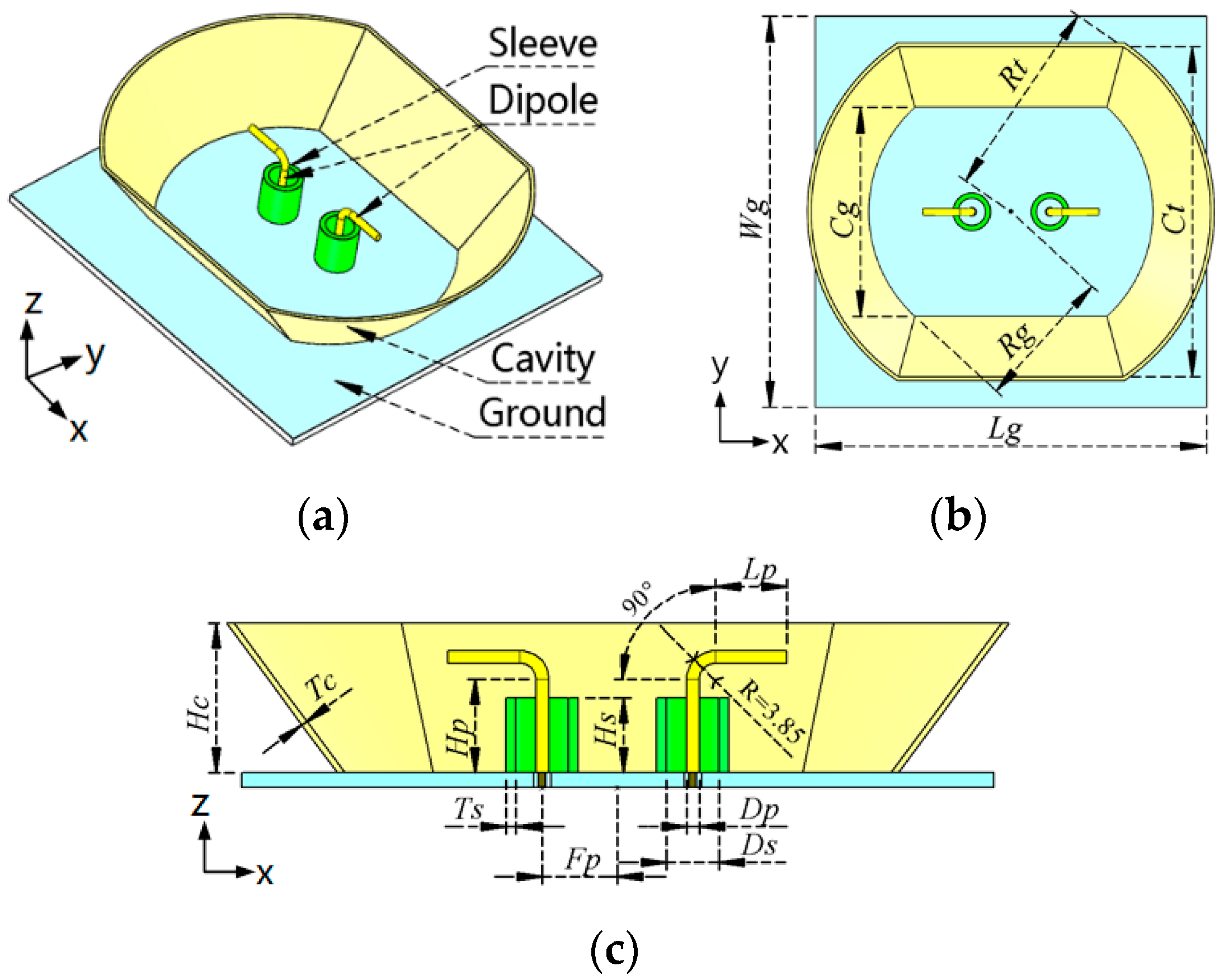

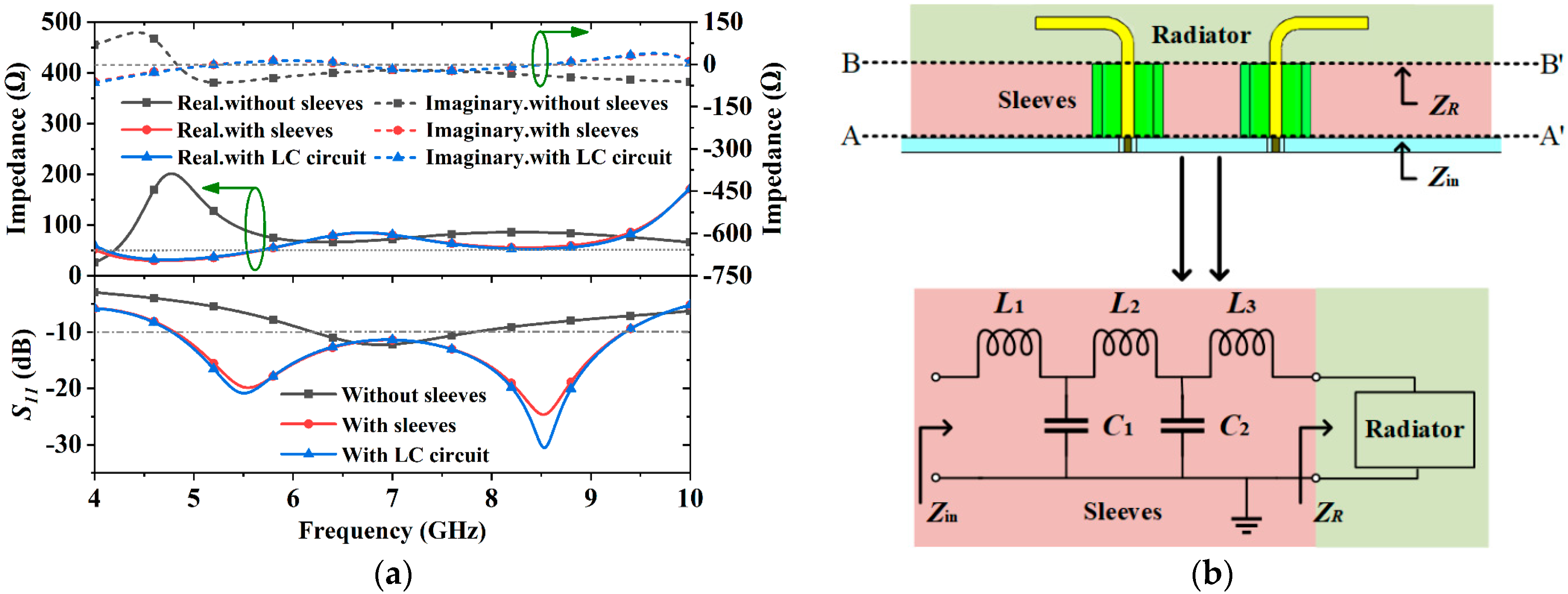
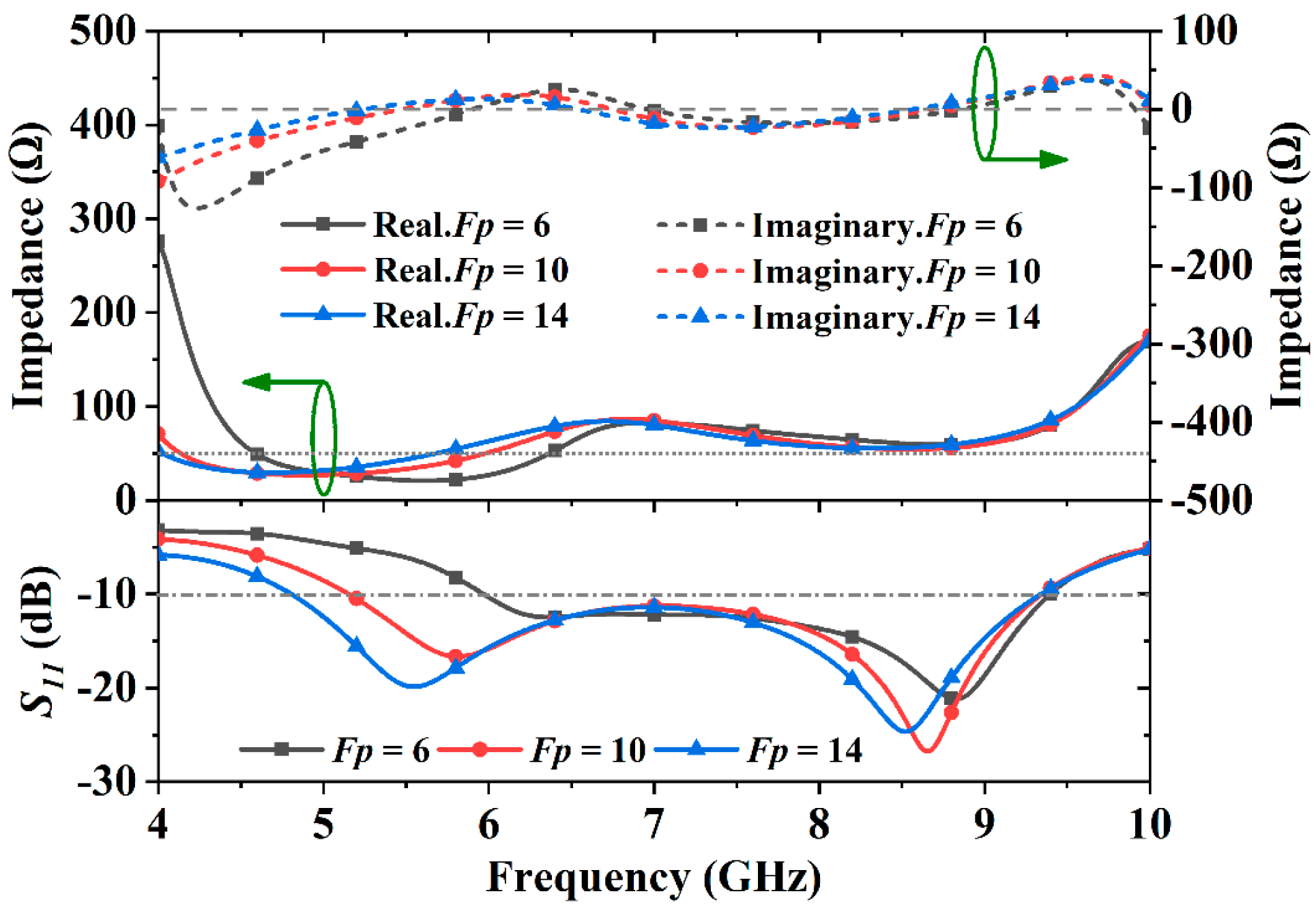
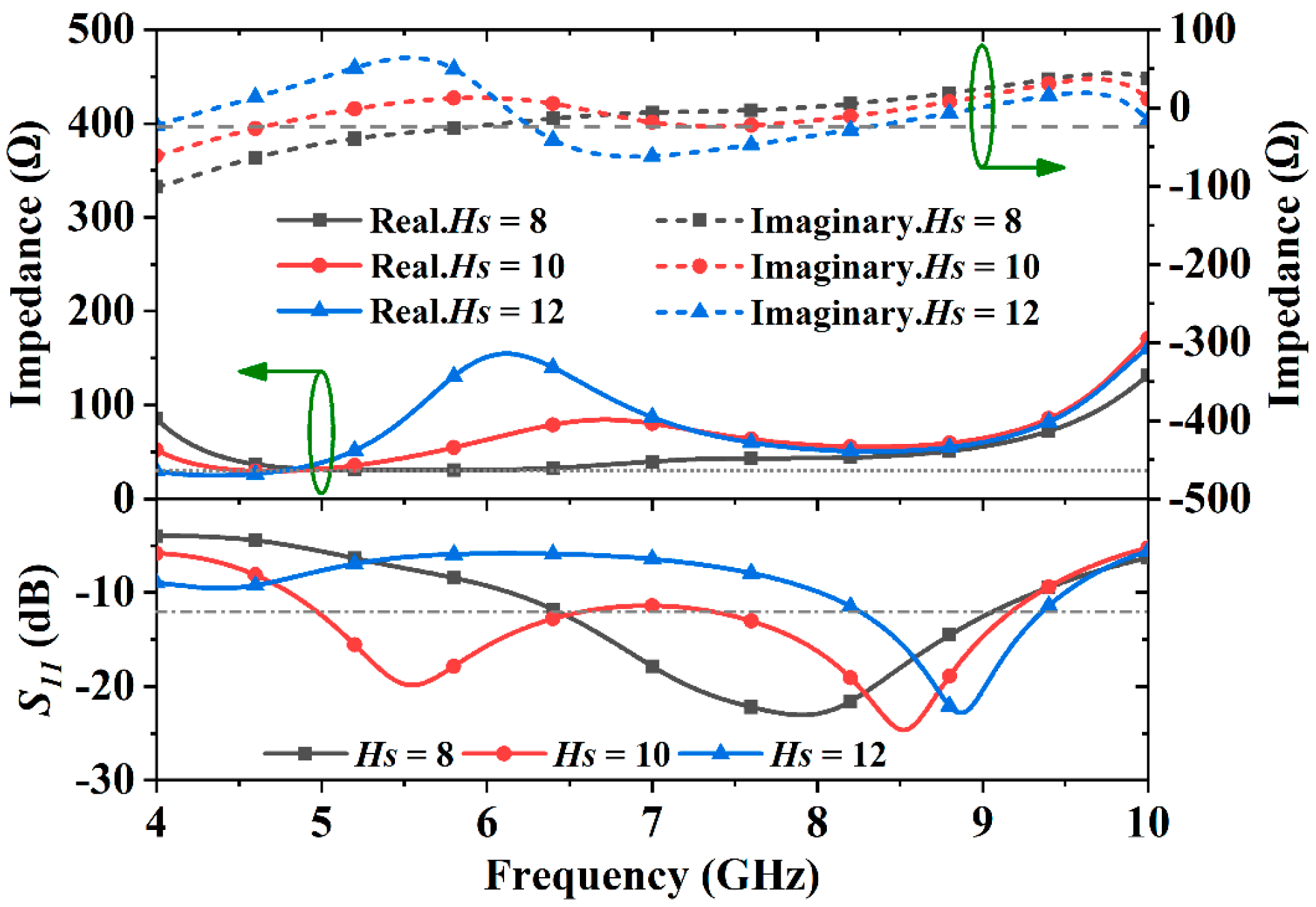

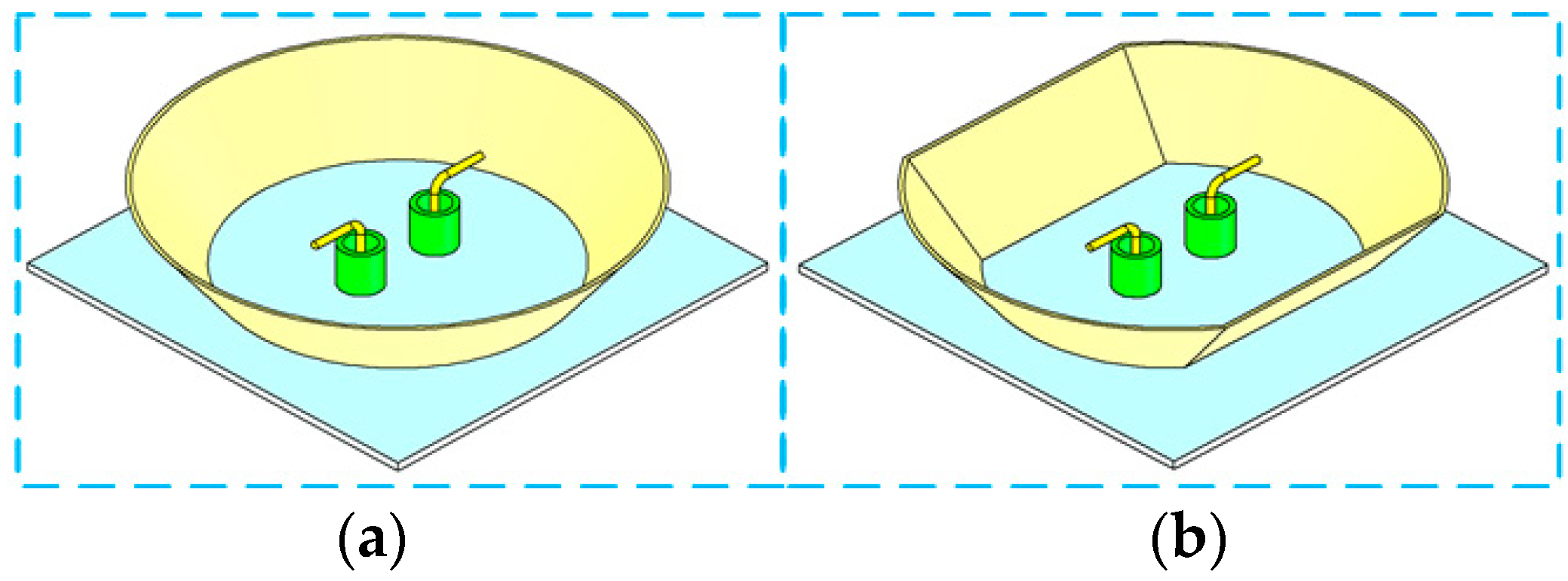
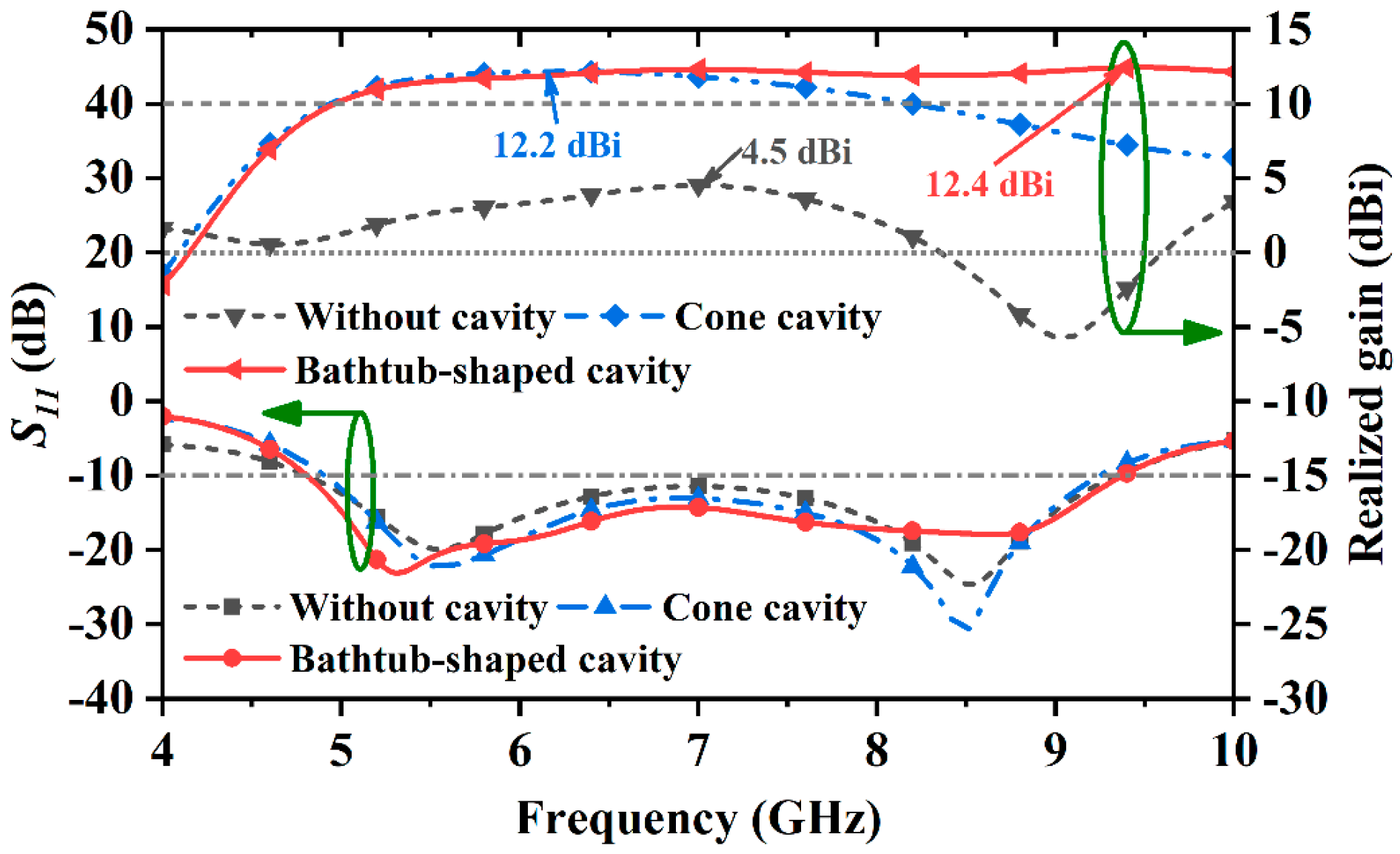
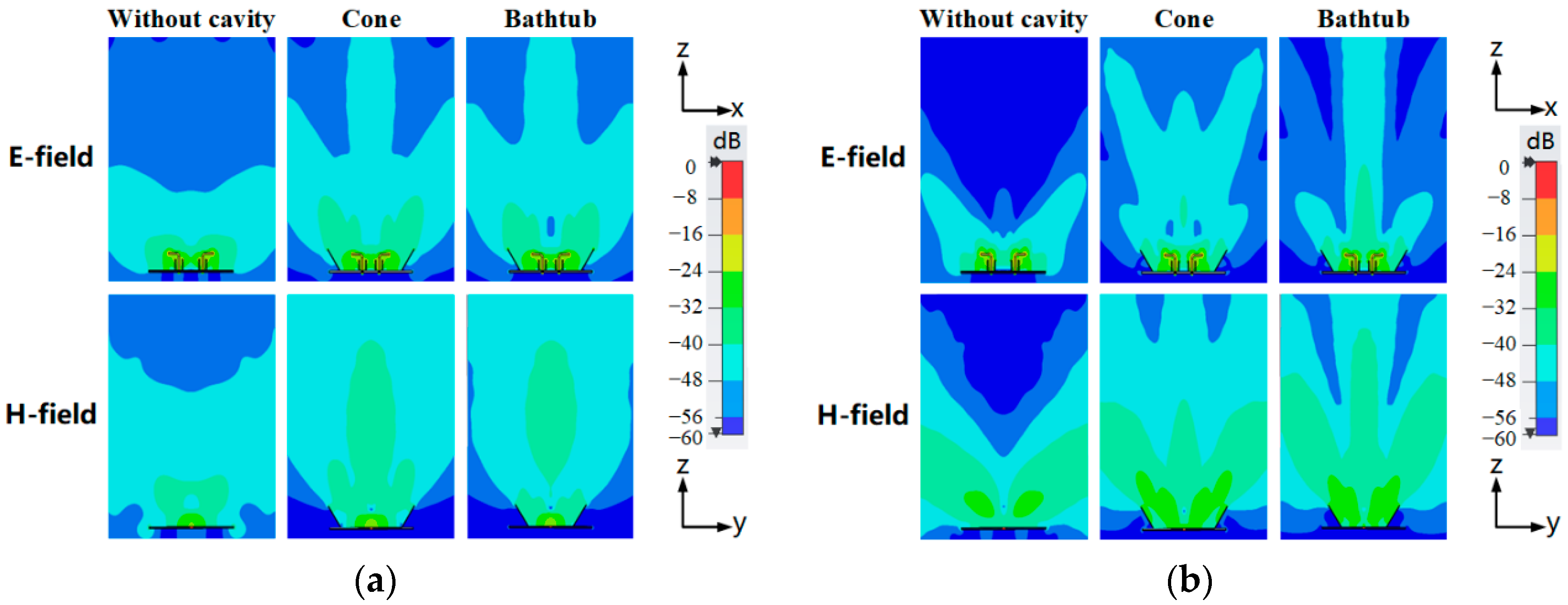
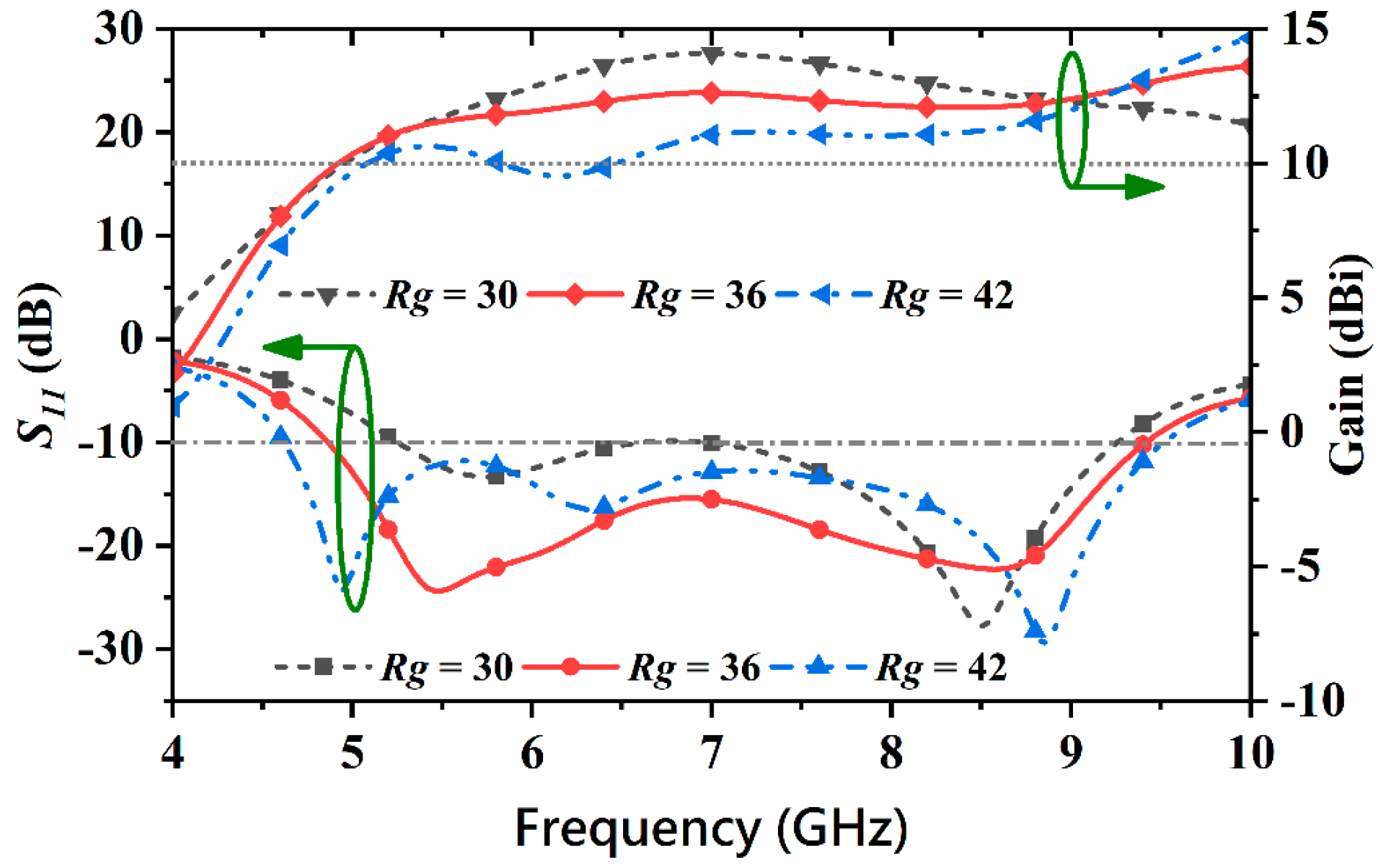
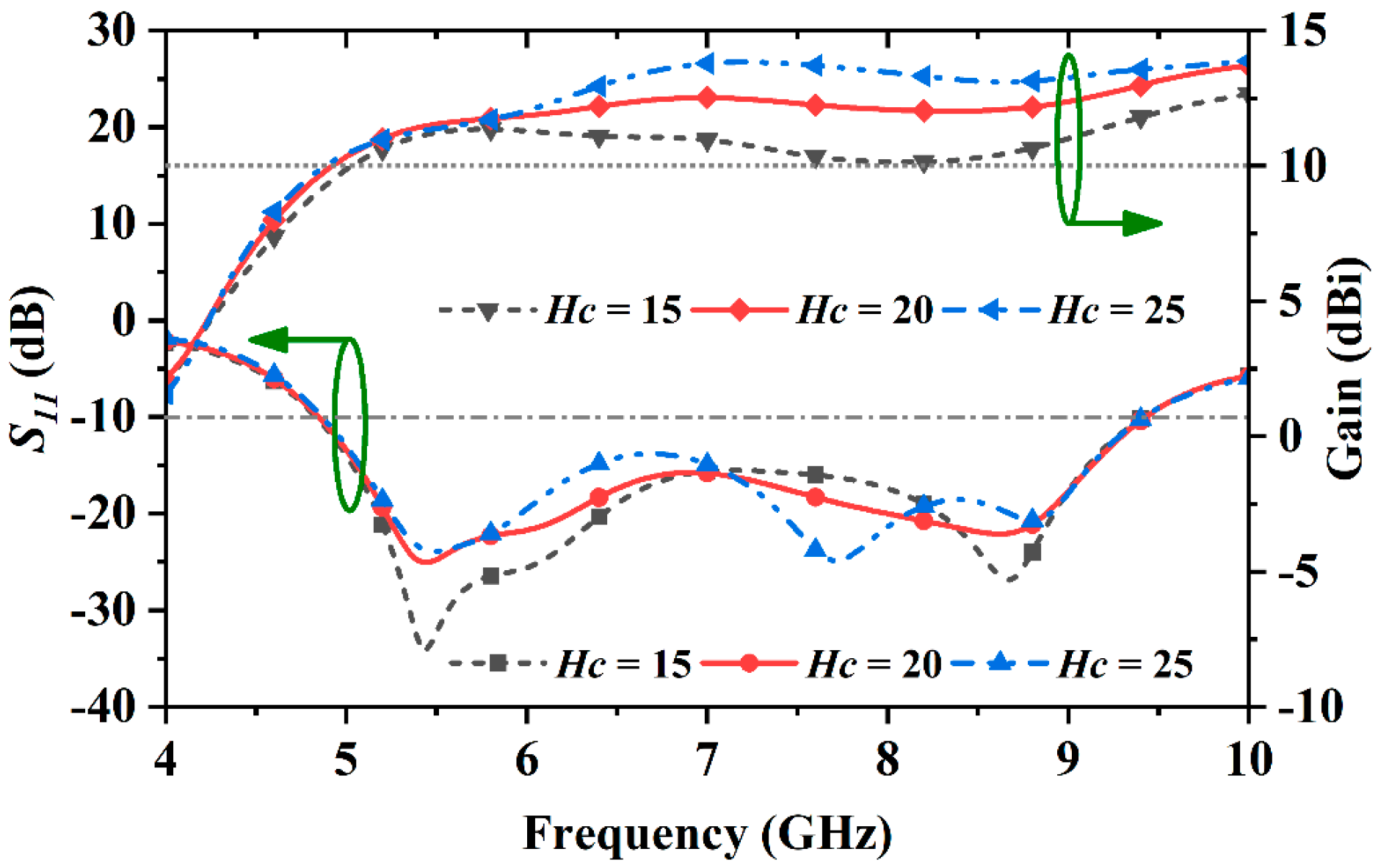
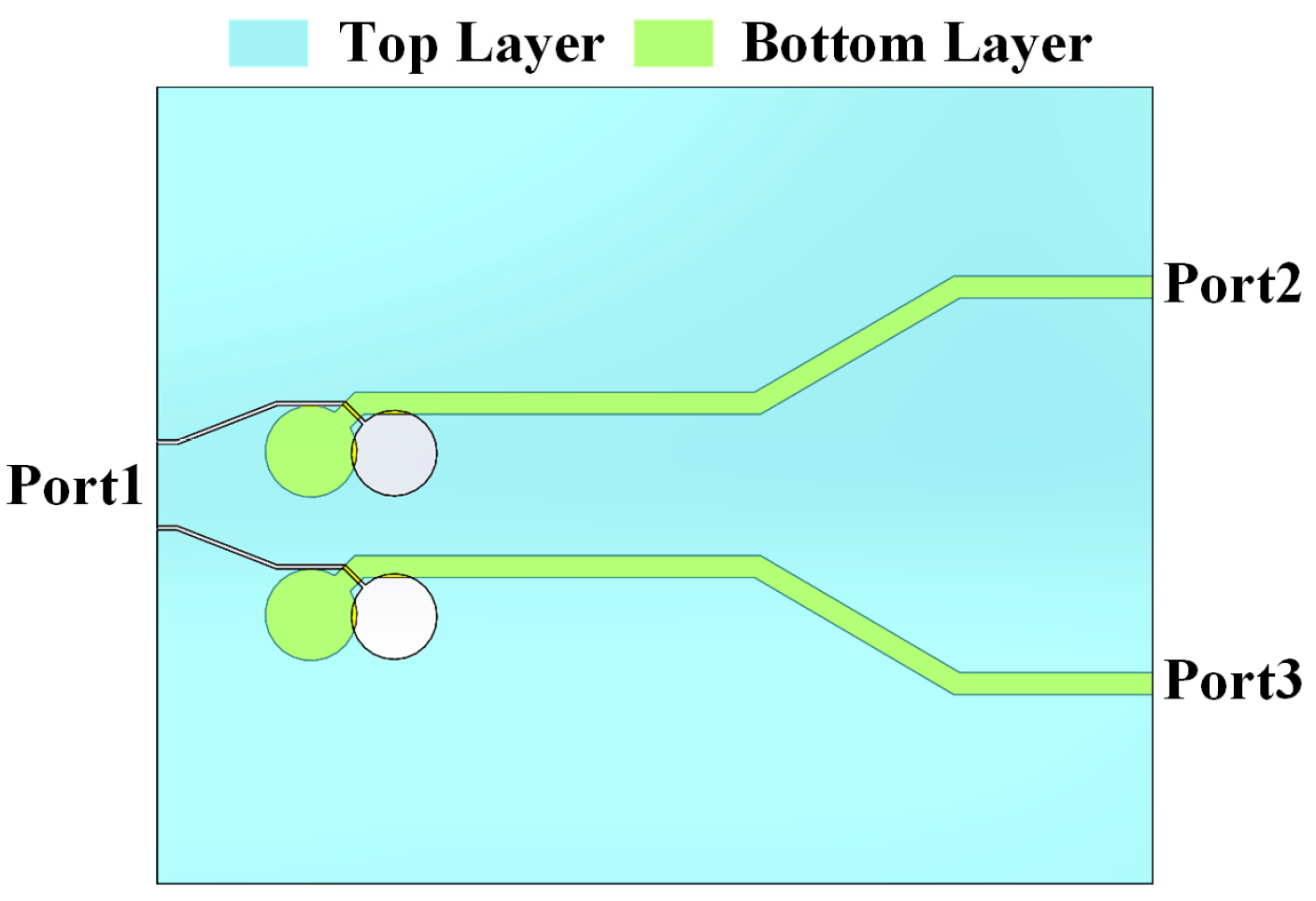



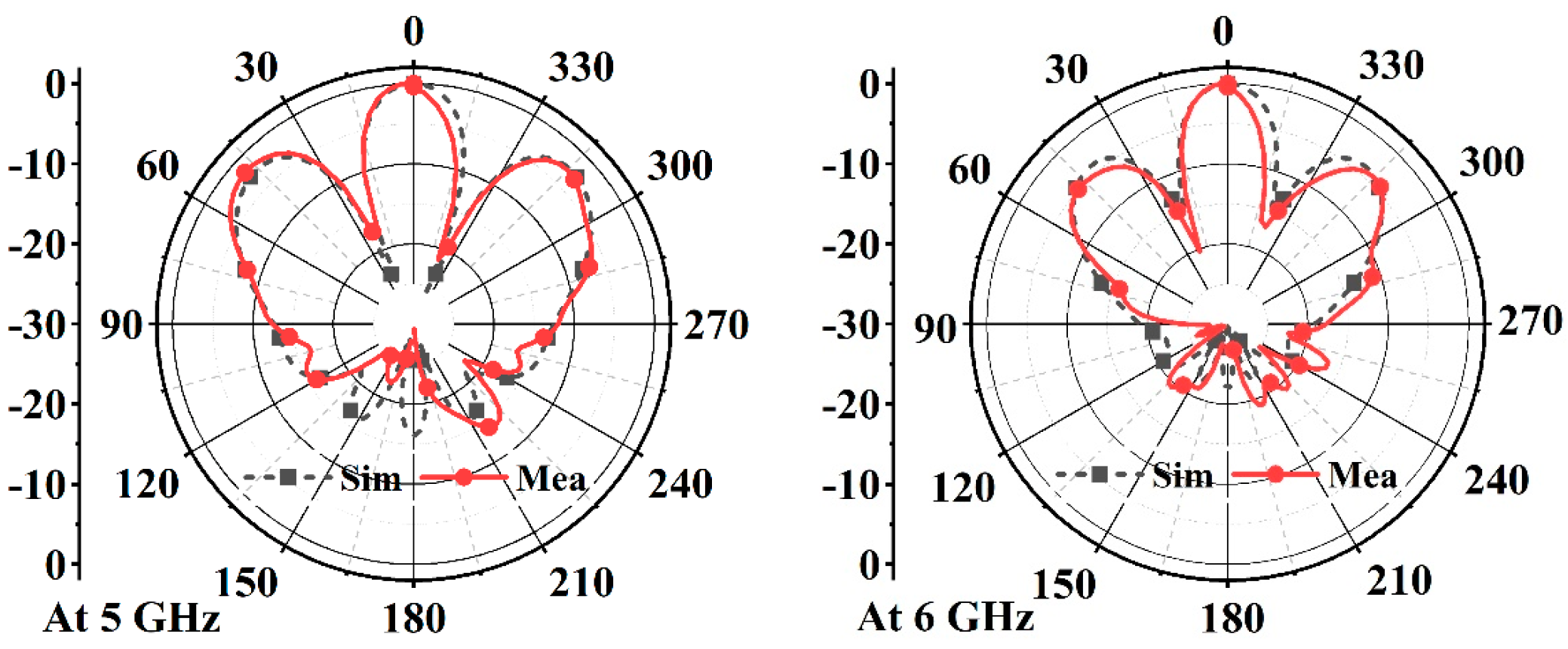

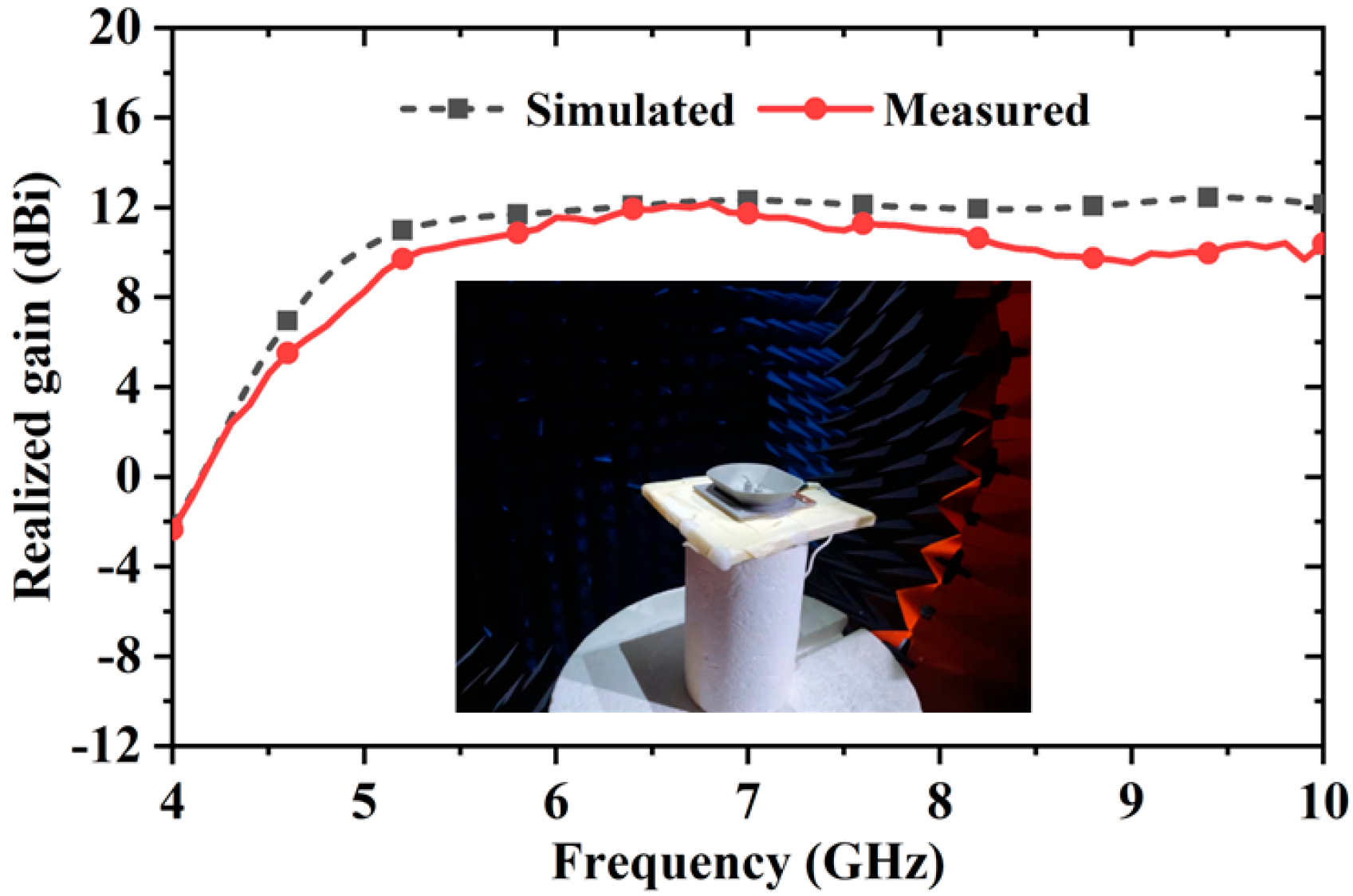
| Parameter | Lg | Wg | Lp | Hp | Dp | Fp | Ds | Hs |
| Value | 100 | 100 | 9.5 | 12.5 | 1.7 | 10 | 7 | 10 |
| Parameter | Ts | Tc | Rg | Cg | Rt | Ct | Hc | |
| Value | 1.3 | 1 | 36 | 53.5 | 51 | 84.3 | 20 |
| Ref. | Dimensions (λL3) | Impedance BW (GHz) (BW%) | Maximum Gain (dBi) | 3-dB Gain BW (GHz) (BW%) | GBW/IBW |
|---|---|---|---|---|---|
| [7] | 0.8 × 0.8 × 0.25 | 2.4–3.8 (45.4%) | 6.7 | 2.4–3.8 (45.4%) | 1 |
| [8] | 0.8 × 0.8 × 0.24 | 1.6–3.5 (45.4%) | 9 | 1.6–3.1 (63.3%) | 0.87 |
| [12] | 0.66 × 0.43 × 0.1 | 1–2.1 (80%) | 9.3 | 1.5–2.1 (60%) | 0.75 |
| [13] | 1.7 × 1.4 × 0.28 | 1.7–2.6 (41.5%) | 12 | 1.7–2.3 (32.9%) | 0.79 |
| [14] | 0.66 × 0.43 × 0.1 | 1.8–2.8 (43.6%) | 10.8 | 1.9–2.8 (39%) | 0.89 |
| [15] | 0.6 × 0.6 × 0.26 | 1.6–3.8 (81.5%) | 8.2 | 1.6–3.8 (81.5%) | 1 |
| This work | 1.7 × 1.5 × 0.32 | 4.8–9.4 (64.8%) | 12.6 | 4.9–9.4 (62.9%) | 0.97 |
Publisher’s Note: MDPI stays neutral with regard to jurisdictional claims in published maps and institutional affiliations. |
© 2022 by the authors. Licensee MDPI, Basel, Switzerland. This article is an open access article distributed under the terms and conditions of the Creative Commons Attribution (CC BY) license (https://creativecommons.org/licenses/by/4.0/).
Share and Cite
Zhang, H.; Zhong, H.; Ye, J.; Liao, S.; Li, B. A Wideband High-Gain Dipole with Impedance and Field Control Structures. Electronics 2022, 11, 1892. https://doi.org/10.3390/electronics11121892
Zhang H, Zhong H, Ye J, Liao S, Li B. A Wideband High-Gain Dipole with Impedance and Field Control Structures. Electronics. 2022; 11(12):1892. https://doi.org/10.3390/electronics11121892
Chicago/Turabian StyleZhang, Honglin, Haiquan Zhong, Jianhao Ye, Shaowei Liao, and Bing Li. 2022. "A Wideband High-Gain Dipole with Impedance and Field Control Structures" Electronics 11, no. 12: 1892. https://doi.org/10.3390/electronics11121892






